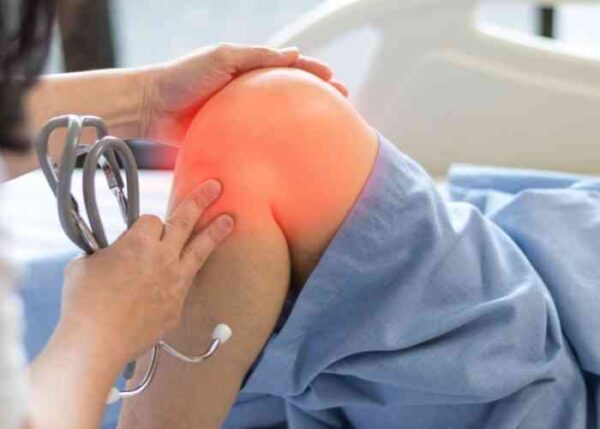Osteochondritis Dissecans (OCD) Surgeon

Are you a young athlete who participates in high impact sports with continuous jumping or running? If so, you may be at risk for a rare condition known as osteochondritis dissecans of the knee (OCD). Knee OCD specialist, Doctor Riley J. Williams provides diagnosis as well as surgical and nonsurgical treatment options for patients in Manhattan, Brooklyn, New York City and surrounding areas who have OCD of the knee. Contact Dr. Williams’ team today!
What is osteochondritis dissecans (OCD)?
An OCD lesion is best described as a focal area of bone-cartilage injury that is caused by an abnormality of the bone at birth. OCD is a joint condition that occurs in young children and adolescents. Although the exact cause of OCD is unknown, intrauterine trauma to the joint could be the potential factor. Any joint can be affected by OCD, but this condition is most commonly observed in the knee, ankle and elbow. Proper blood supply to the affected area is inhibited; this compromised blood flow leads to the bone necrosis. The dead necrotic bone then separates from the healthy underlying bone forming the OCD lesion. The necrotic bone is soft, and over time, the overlying cartilage within the area begins to crack and ultimately may detach. Symptoms of OCD may include pain, swelling, catching, and joint locking.

What is osteochondritis dissecans (OCD) repair?
Osteochondritis dissecans repair of the knee is a surgical treatment that addresses the symptoms associated with a symptomatic osteochondritis dissecans lesion of the knee. When conservative, non-surgical treatment methods fail, OCD repair is often indicated as a means of relieving clinical symptoms and to prevent joint degeneration and osteoarthritis. OCD repair methods include the following:
Retrograde drilling of the lesion – drilling beneath the lesion to increase blood flow
Microfracture – creation of vascular channels through the lesion to increase blood flow
OCD lesion fixation or pinning – uses internal fixation to stabilize the OCD lesion
Bone and/or cartilage grafting – reconstruction of the OCD using external tissue sources
What is OCD pinning?
OCD pinning is one type of surgical procedure Dr. Williams may use to repair the damage that accompanies a symptomatic osteochondritis dissecans. The goal of OCD pinning is to stabilize an unstable OCD bone-cartilage fragment. The procedure involves the use of small medical devices such as screws and pins that are specifically designed to fixate and compress the fragmented OCD lesion back to the underlying bone. Dr. Williams is also an expert in the use of “biologic pins” to fix OCD lesions. Small bone cartilage plugs, taken from the patient’s own knee, can also be used to stabilize and treat these lesions. Riley J. Williams, orthopedic knee surgeon, serving Manhattan, Brooklyn, New York City, NY and surrounding areas, has extensive experience in osteochondritis dissecans repair, including OCD pinning.
How is OCD repair performed?
The goal of OCD repair is to restore the normal bone-cartilage anatomy at the affected area. If the cartilage is intact, the abnormal bony area may be addressed. Restoration of normal blood flow to the underlying bone is key to this approach. In cases where the cartilage over the abnormal bone has fragmented, the OCD may need to be reconstructed.
Osteochondritis dissecans repair can be done arthroscopically or by formal open surgical approaches. Such surgery is usually done using local and regional anesthesia. Dr. Williams will treat the injury, depending on the severity and type of OCD lesion. OCD repair may include:
- Drilling (creation of new blood vessel pathways)
- Restorative Treatment (replacing damaged cartilage & bone)
- Internal fixation, which can include OCD pinning
- Bone Marrow stimulation techniques (microfracture)
- Osteochondral autograft transplantation
- Autologous chondrocyte implantation
- Osteochondral allograft (donor) transplantation
What are the risks of OCD repair?
Any type of surgery will come with risks that may include infection and blood clotting. OCD repair of the knee may come with the risk of continued knee pain, swelling, stiffness as well as the possible development of osteoarthritis. Dr. Williams will discuss specific risks based on patient health, underlying medical conditions and activity level.
How long does it take to recover from OCD repair?
Most patients undergoing OCD repair will be required to use crutches for 1-2 weeks following surgery. Most patients are allowed to bear weight fully after 2 weeks. Physical therapy starts 7-10 days after surgery and is usually necessary for approximately four months. The goals of postoperative therapy include regaining strength, regaining range of motion in the knee joint, and regaining fitness to participate in high demand activities. Patients are typically able to return to regular activities of daily living after 6 weeks; most patients will return to most athletic activities 4-6 months after surgery.
For additional resources on OCD repair, including OCD pinning or to have your knee pain evaluated, please contact the office of Dr. Riley J. Williams, orthopedic knee surgeon serving Manhattan, Brooklyn, New York City, NY and surrounding areas.
